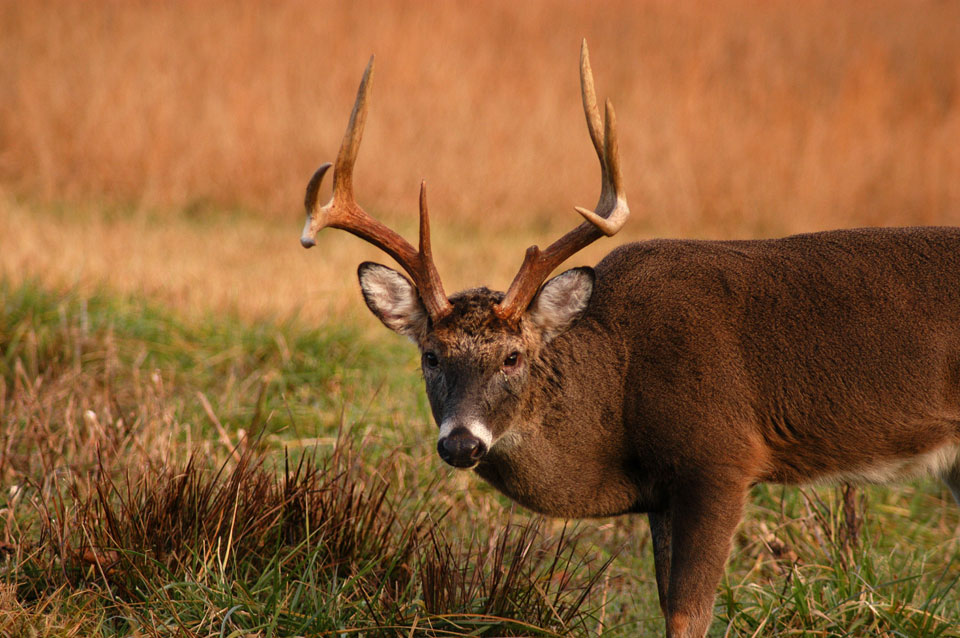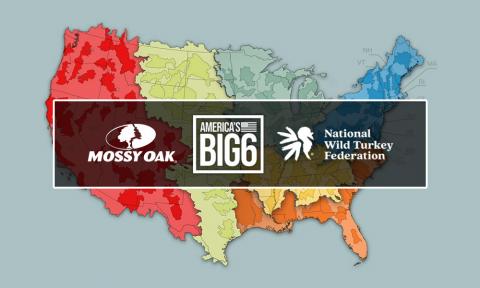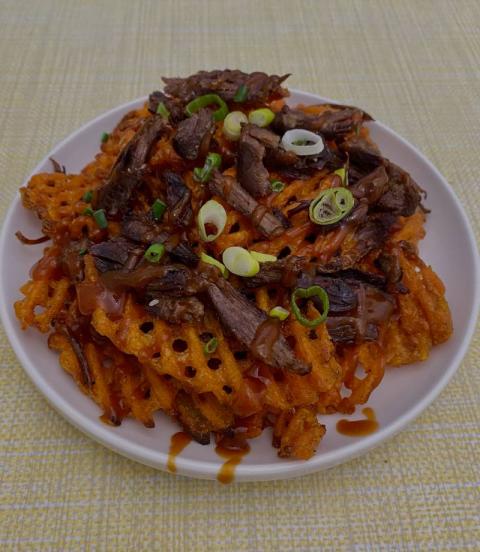Deer rutting season (or “the rut”) is the highlight of the year for any seasoned deer hunter. With bucks with big and small antlers on the chase for estrus does, unique behaviors emerge that make them much more vulnerable and easier to hunt.
If you’re thinking about hunting a buck during deer rutting season, it helps to understand how deer behave during the rut, what tactics are effective for each phase of the rut and how to avoid some common rut hunting mistakes. Let’s look into what so many deer hunters refer to as the rut.

Deer Rutting Season
Deer rutting season is the period between the middle of October to early December when deer mate. Deer behavior changes and hunters must adapt to those changes if they want to score a successful kill.
For the hunter, this period represents the best time to harvest a buck, as deer become more active during the daylight hours, making them easier to spot and kill. During some phases of this season, some deer might even wander off into open areas in broad daylight.
Unlike other seasons, spotting a doe during the rut often means there’s a buck nearby. However, the constant activity of bucks — like chasing estrus does, checking scrapes and making rubs — means that hunters need to set up properly to maximize the chance of catching a buck when it is most vulnerable to line up a good shot.
Peak breeding season, also known as rut hunting season, occurs between the last week of October and the first two weeks of November. However, hunting the other phases of the rut can also yield good results if you employ the right tactics and practice a little patience and perseverance.
The Different Phases of the Rut
Bucks will rut over the course of several weeks, slowly changing their behavior until they come into full rut by the start of November. Their behavior changes in a series of phases starting in the pre-rut — which occurs around the second week of October for much of the country — and culminating in either the post-rut at the end of November or a second rut during the first two weeks of December. In order, these phases are:
-
Pre-rut occurs from mid to late October
-
Seeking from late October to the first few days of November
-
Chasing (peak rutting phase) occurs from early to mid-November
-
Tending (or “lockdown”) from mid to late November
-
Post-rut from late November to the end of the month
-
Second rut (not guaranteed) during the first two to three weeks of December
The unique behaviors that deer display during these six phases means that hunters need to use different tactics for each phase of the rut.
The Pre-Rut Phase
The pre-rut phase occurs when deer transition from the patterns they followed early in the hunting season to fall activity. During this time, the bucks start to perform rutting activities, leaving signs of their condition on the ground or tree trunks and branches. These “rut signs” include scrapes and wallows where male deer have dug shallow pits, urinated into them and rolled around in the resulting mud to coat themselves in it. Branches and tree trunks might also display signs of fraying from deer rubbing their antlers on them to remove velvet.
Many hunters refer to this period as the “October lull” due to deer spending a lot more time in wooded areas. However, this moniker is a misnomer, as knowing where to set up can still produce good results. Hunting over large fields and open areas during this phase is a common mistake that leads to the perception of a lull.
Deer hunting during this phase requires significant knowledge about deer behavior. Most importantly, it is vital to know where they go for food and where they bed for the night. Deer start to hit mast crops during this period, so look out for areas with lots of acorns. Rut signs are a good indication that a buck has settled in nearby.
It is important to monitor game cameras this time of year as deer patterns change. It is not unusual for bucks only seen on camera at night to start showing up during the day. You may notice bucks you have never seen before occasionally cruising a field. In some cases, you may be able to add a buck to your hit list based on activity you have noticed on your game camera.
Setting up between food sources and bedding areas gives the best results. During this period, evening sits are the most productive. Morning hunts don’t typically yield good results due to the uneven patterns bucks follow as they transition to their fall ranges and behavior patterns during this period. Since deer are often in the field in the early morning, hunters often spook them on their way to the stand. Using calls and decoys during this phase is also a bad idea since most deer won’t respond to them just yet, and a call would most likely just scare them away.
The Seeking Phase

The seeking phase is when bucks start to try to determine the general location of females. Mature bucks begin to walk in the daylight, and younger deer might begin chasing females during this period.
Deer hunting during this phase is a little less constrained as far as good hunting times are concerned. Due to increased hormone levels, deer wander about earlier in the day and rut signs become more prevalent.
Like the pre-rut phase, staking out the areas between the bedding and feeding zones is still the most effective tactic. However, morning hunts start to become effective now – especially when setting up between a bedding spot and an area with a lot of rut signs. Using calls might work during this period but its ability to attract a buck won’t be very effective until the latter half of this period.
The Chasing Phase
The chasing phase is the period most hunters refer to as “the rut.” It is the period of the deer rutting season when these animals are most sexually assertive. Little actual mating happens during this phase, but every buck out there should now be making a play for estrus females. With just one thing on their minds, bucks lower their guard and become easier to harvest.
For deer hunting during this phase of the rut, set up alongside trails that run parallel to any fields, open areas and food sources. Bucks use these trails to search for estrus does that might have traveled along them. In hill country, bucks travel along ridges, staying a little bit away from the top of the ridgeline to avoid being skylined, so setting up on the leeward side of ridges works here. They might also visit doe bedding areas in search of the females that occupy them.
It is during this phase that throwing out all the stops when it comes to trying to attract deer becomes effective. Both doe-in-heat and buck-grunt calls work, with the former attracting bucks in search of a mate and the latter pulling in bucks that want to chase competition off their territory. Decoys also work to attract either males taking an interest in a forthcoming (unmoving when approached) doe or males who might view them as competition. Naturally, scents can also work during this phase if deployed properly at around waist height in the surrounding foliage.
The Tending Phase
The tending phase is when much of the actual breeding happens. During this phase, mating pairs usually hole themselves up in thick cover, which can make this phase of the rut very difficult to hunt. However, it isn’t impossible, and a keen hunter might be able to capitalize on a buck slipping up and breaking cover.
Deer hunting this phase of the rut involves keeping watch over known bedding areas. Setting up over narrower transit areas that buck traverse in search of another estrus doe is also a decent choice. Flexibility is key here, as is getting as much intelligence as possible using cameras, tracks or local sighting reports. Don’t stay too long in a spot that clearly hasn’t delivered and be ready to move if you get whiff of a sighting.
As with the previous phase, using calls aggressively might still prove effective. Many bucks are still sexually fired up during this phase, and the promise of another female might lure one in. They might not, however, be as keen on driving out competition as they previously were.
The Post-Rut Phase
The post-rut phase is generally one of the toughest phases to hunt. Breeding should have died down by now, though a few does might still enter estrus during this phase. However, breeding activity isn’t the only factor that affects deer behavior during this phase. The elevated hunting levels during the peak of the rut, in particular, would have pressured the deer into being a lot more cautious.
Weather, too, can affect deer hunting during the post-rut phase. In many areas of the country, post-rut also means bitter cold weather. Only the hardiest hunters dare brave some of the brutal conditions found across much of the country. For those who do, understanding what bucks are doing during the post-rut is important.
This phase marks a return to more reserved hunting tactics. Bedding is once again the chief method for bagging a buck, and hunters might have to contend with the thick cover the bucks prefer to hide in during this phase. Hunters should be on the lookout for bucks chasing does who enter into estrus late or bucks trying to gorge on green food plots. This time of year, bucks need nourishment to help recover from their rutting activities. Knowing where green food sources are this time of year can help a savvy hunter bag a big buck.
The Elusive Second Rut

At the very tail end of the deer rutting season, a second rut might occur, which is when females who were not bred during the first rut go into a second estrus cycle. Doe fawns can also become sexually active for the first time during this phase and enter estrus. If food is abundant, the latter can happen as a larger event.
During this phase, deer hunting primarily takes place around food sources and along bed-to-feed trails. Doe fawns might also go out in the open, which has the potential to attract males out of cover for a clean shot. However, because only a few does go into estrus during this phase, it generally yields slim pickings unless food is unusually abundant during and after the peak rut.
Hunting the Deer Rutting Season
Hunting during deer rutting season can be an extremely rewarding experience. Understanding the different phases of the rut and what deer are doing during that time can mean the difference between antlers walking toward you during daylight hours or sitting in the stand watching the snow fall. With so few precious moments to deer hunt each deer season, information like we mentioned above can help you maximize the few hours you have to hunt each year. With good technique and well-thought-out concealment and camouflage, bagging a buck during the season is possible.





























